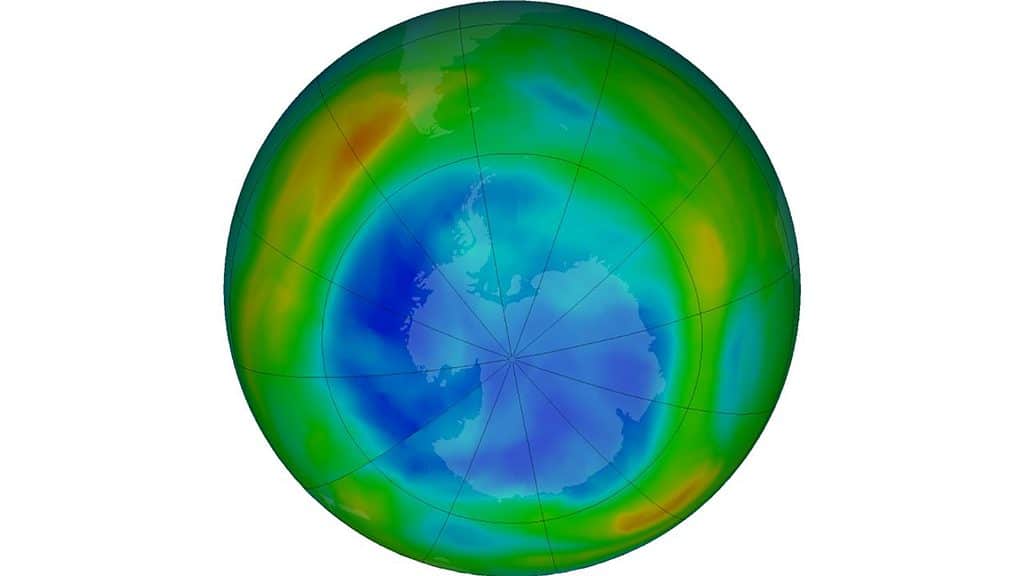In a rare piece of good news for the planet, the ozone layer could recover in just four decades thanks to decades of work to get rid of ozone-damaging chemicals, a group of experts backed by the UN has found. The ozone layer plays an important role for living things on Earth, protecting us from harmful levels of the sun’s ultraviolet radiation.

Scientists first identified a hole in the ozone layer, a thin part of the Earth’s atmosphere, back in 1985. Chlorofluorocarbons (CFCs), a group of chemicals that were commonly found in spray cans, fridges, foam insulation, and air conditioners, were largely blamed. International cooperation then stepped up to try to revert the damage.
Countries adopted a global agreement called the Montreal Protocol, which established the phase-out of almost 100 synthetic chemicals that were tied to the destruction of the ozone. In the latest report on the progress of the agreement, an UN-backed panel confirmed that almost 99% of banned ozone-depleting substances were phased out.
“This is fantastic news. The impact the Montreal Protocol has had on climate change mitigation cannot be overstressed. Over the last 35 years, the Protocol has become a true champion for the environment,” Meg Seki, the Executive Secretary of the United Nations Environment Programme’s Ozone Secretariat, said in a media statement.
We’re fixing this one
Since the chemicals were banned by the Montreal Protocol, there’s been a “notable recovery” in the ozone layer, according to the UN report, which is done every four years. The phase-out of the chemicals will also avoid an estimated 0.5 degrees Celsius of warming by 2100, which is a lot, considering temperature has increased by 1.1C so far.
The depletion of the ozone layer isn’t a big driver of climate change, but efforts to save it are proving beneficial to bring down temperature rise. In 2016, an amendment to the Montreal Protocol asked to phase out the production and use of some hydrofluorocarbons. These don’t directly deplete the ozone layer, but they are powerful greenhouse gases.
The researchers argued that if current policies are maintained, the ozone layer will be restored to 1980 values (before the ozone hole appeared) at different points in different places. First, in 2066 over the Antarctic, where ozone depletion was the worst. Then in 2045 over the Arctic. And finally, in two decades’ time everywhere else.
“Ozone action sets a precedent for climate action. Our success in phasing out ozone-eating chemicals shows us what can and must be done – as a matter of urgency – to transition away from fossil fuels, reduce greenhouse gases and so limit temperature increase,” Petteri Taalas, Secretary-General of the World Meteorological Organization, said in a statement.
While the report has been described as good news, and evidence that international action to avoid environmental crises can work, it warns that continued progress on the ozone layer is not guaranteed. For example, proposals to limit global warming by spraying aerosols into the stratosphere (known as geoengineering) could reverse the ozone layer’s recovery.
The fixing of the ozone layer is also an example that we can, through international cooperation, solve environmental problems. It’s exactly the type of approach we need to deploy with climate change. Addressing climate change will, however, be much harder — but having a blueprint for success could perhaps make a difference.









